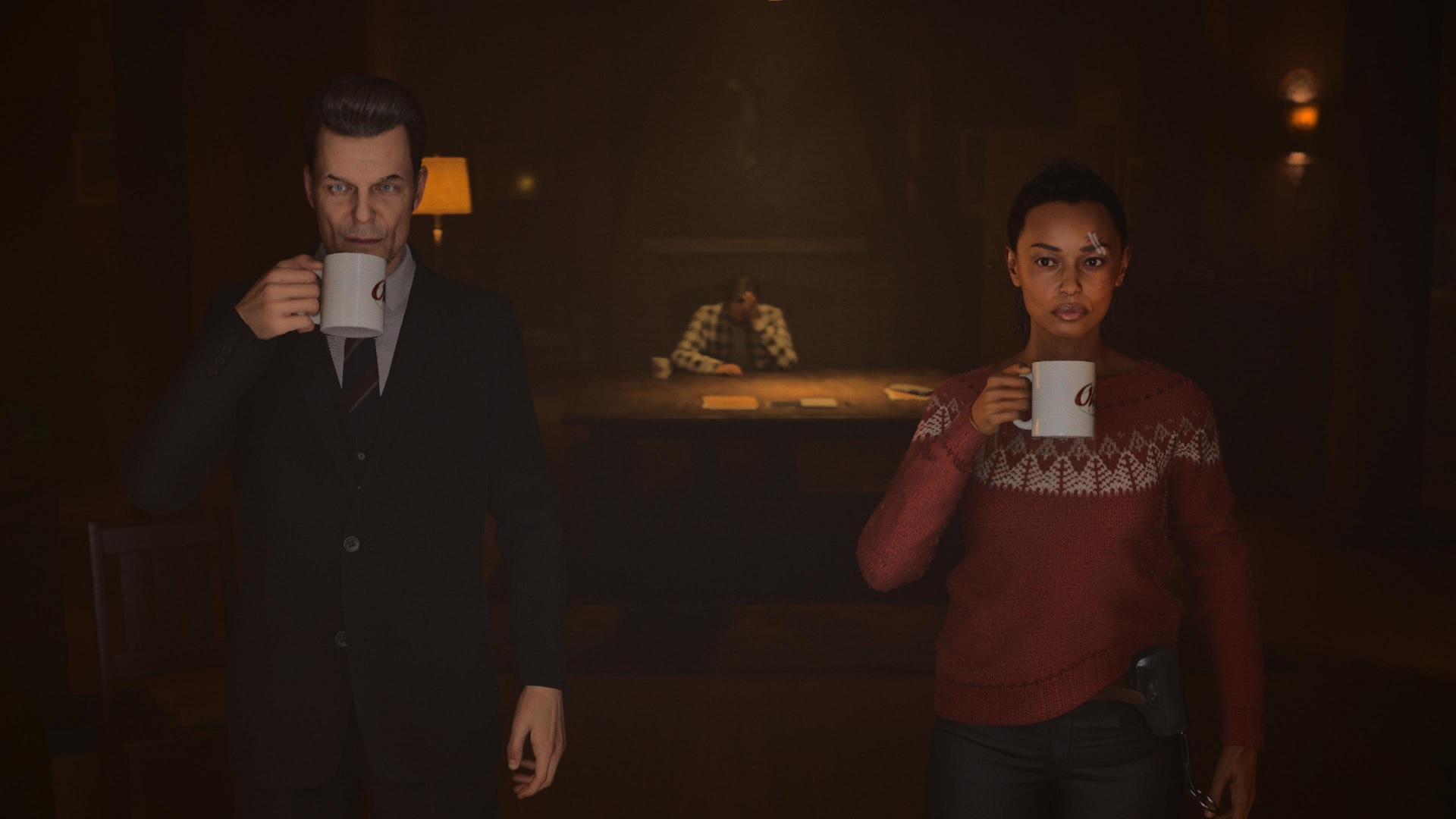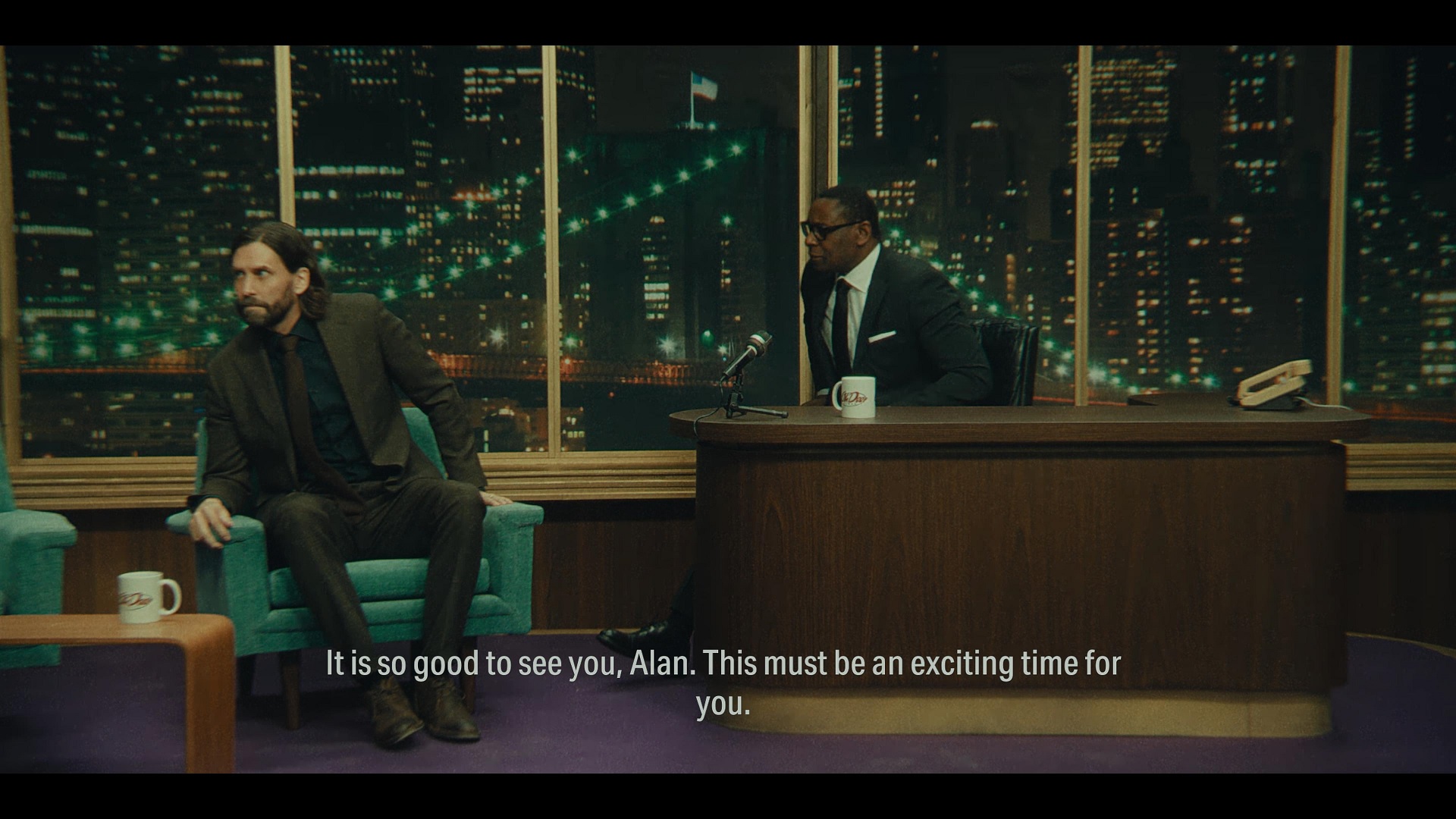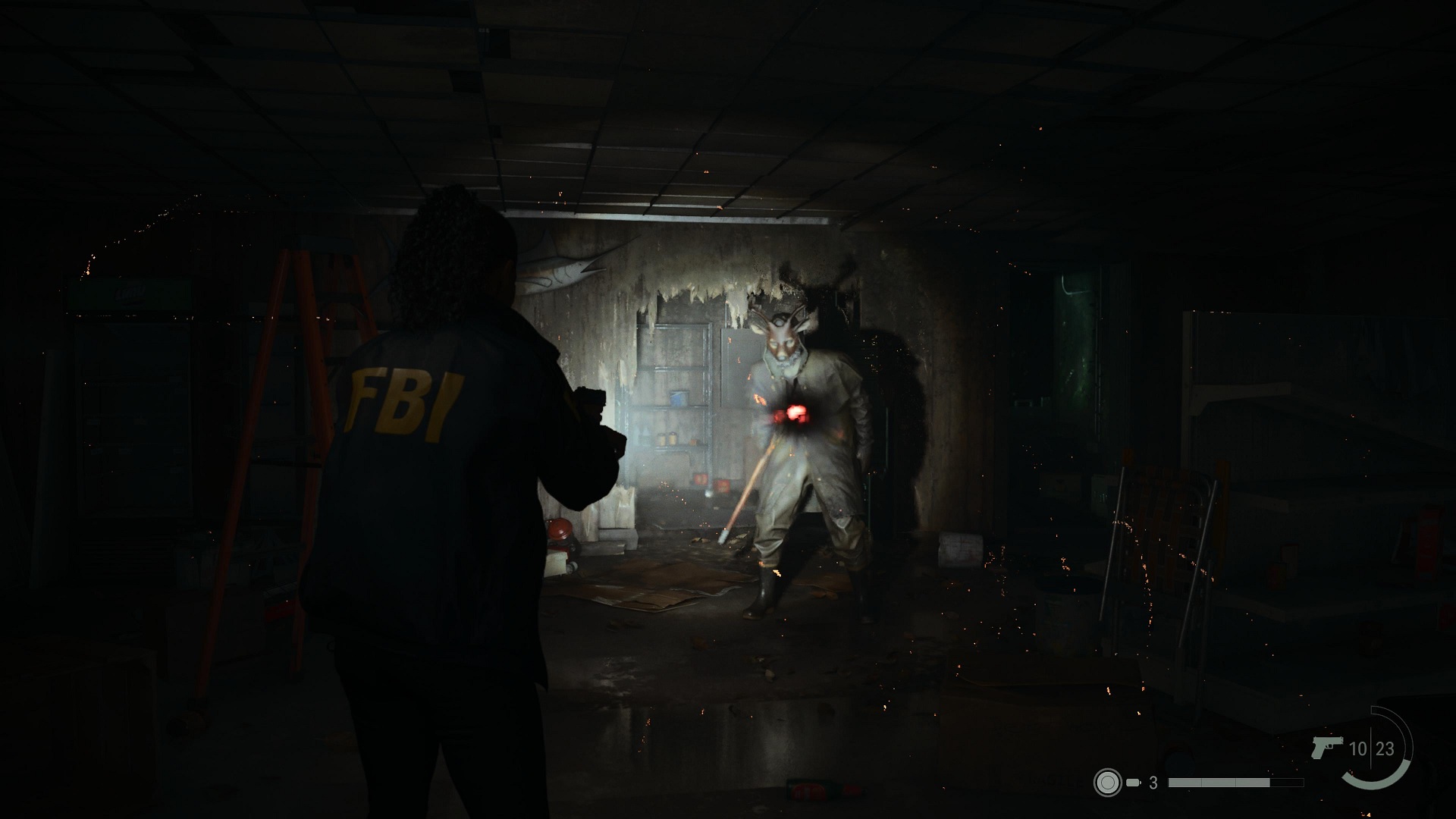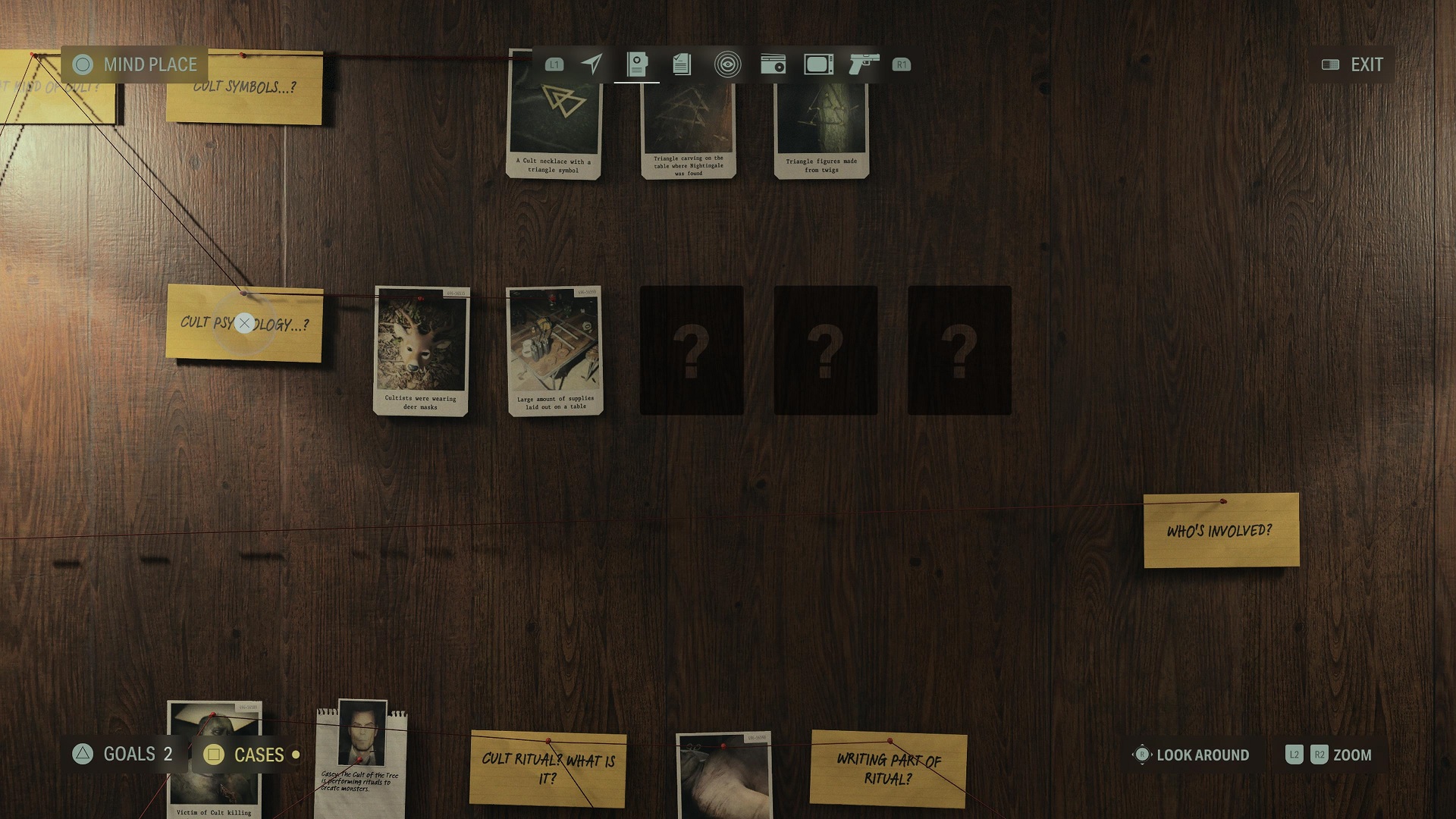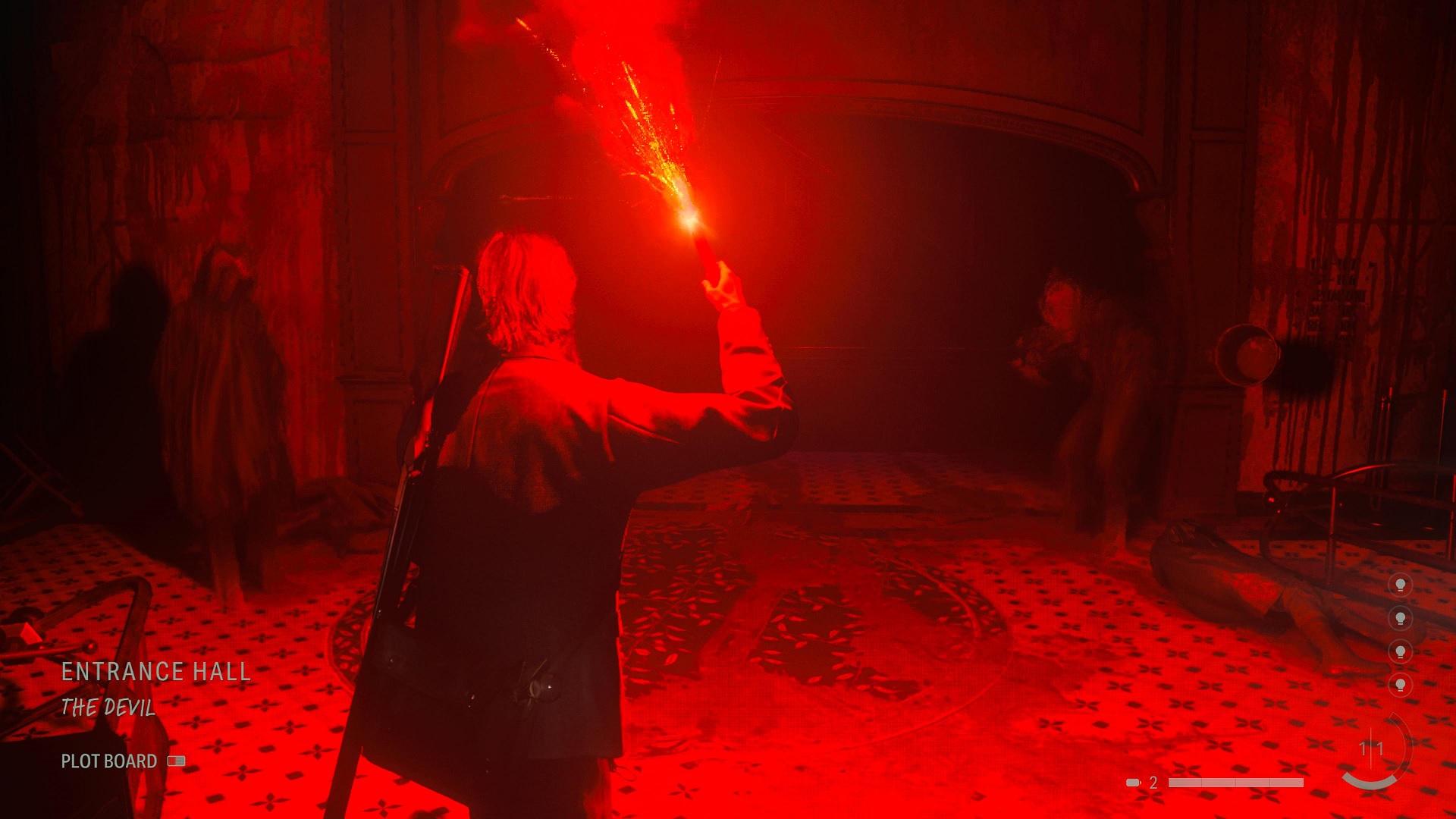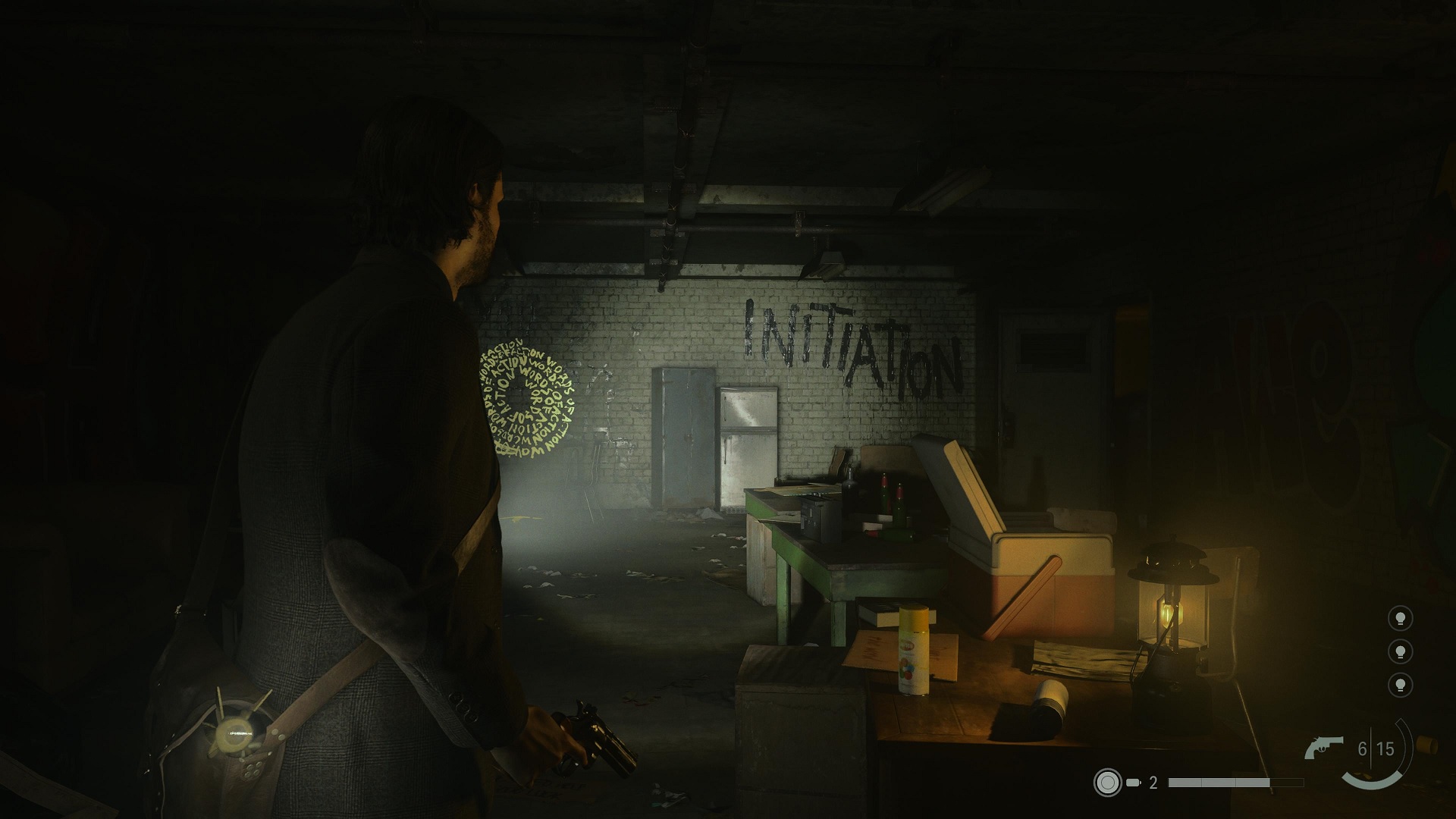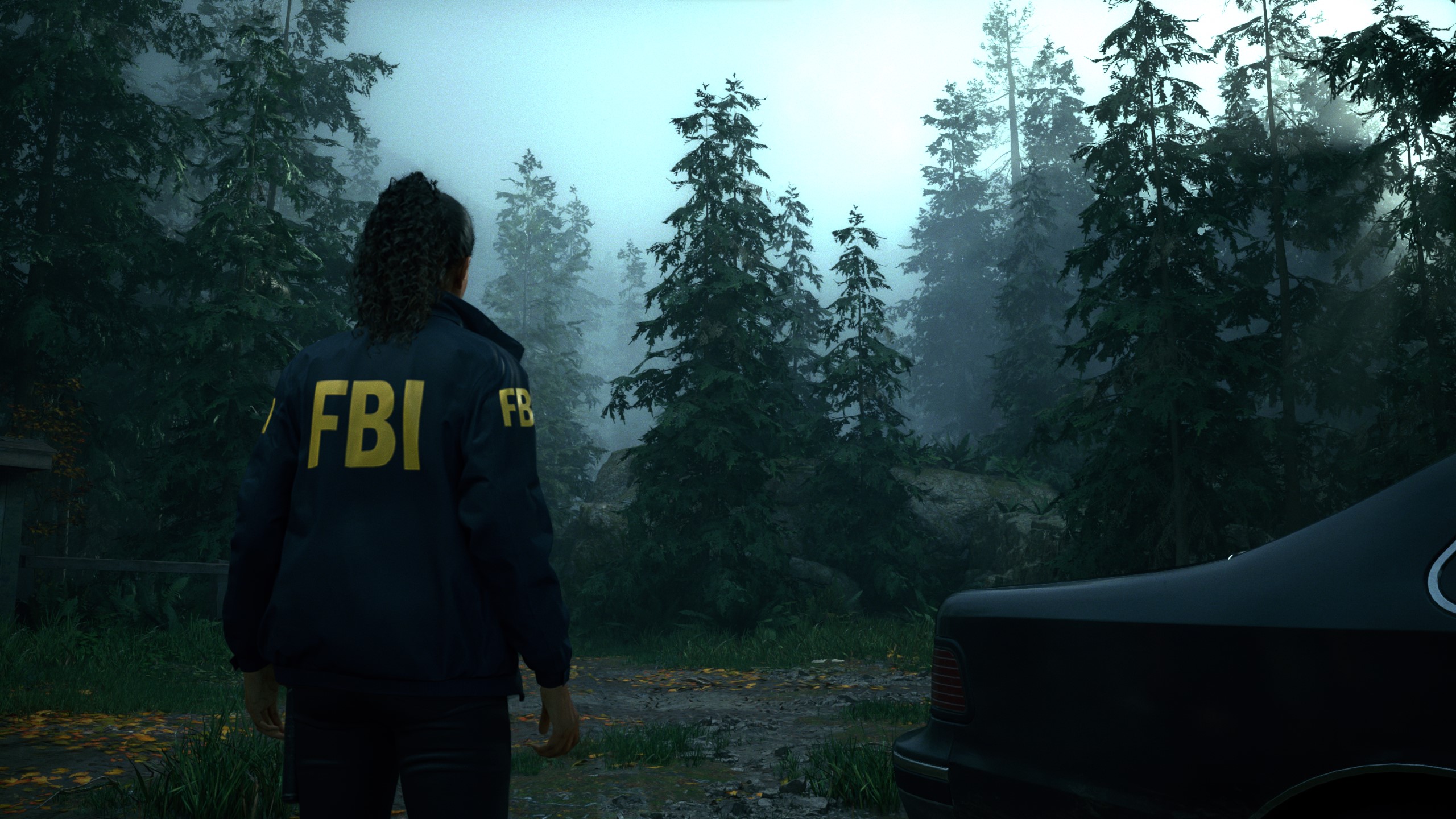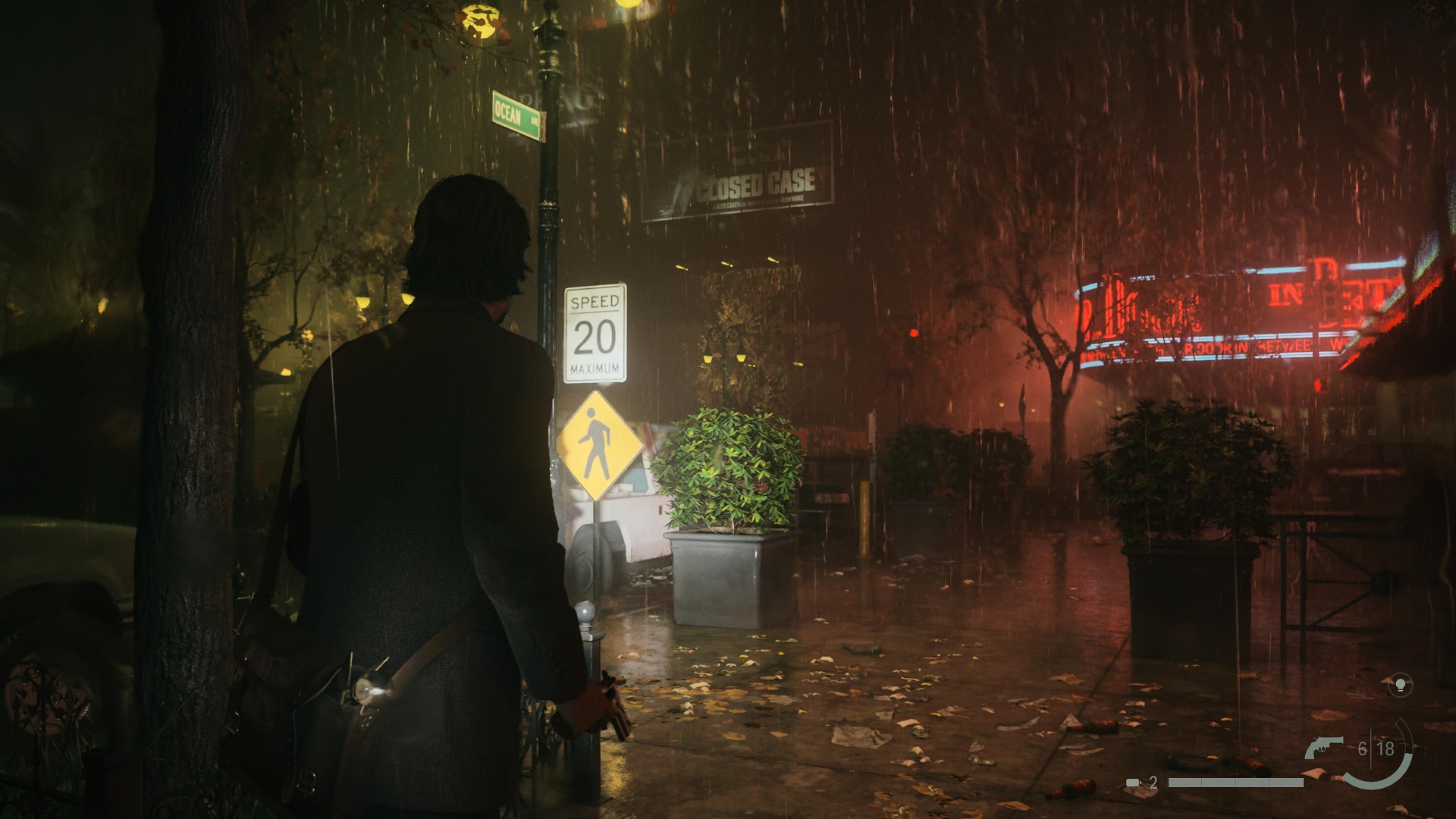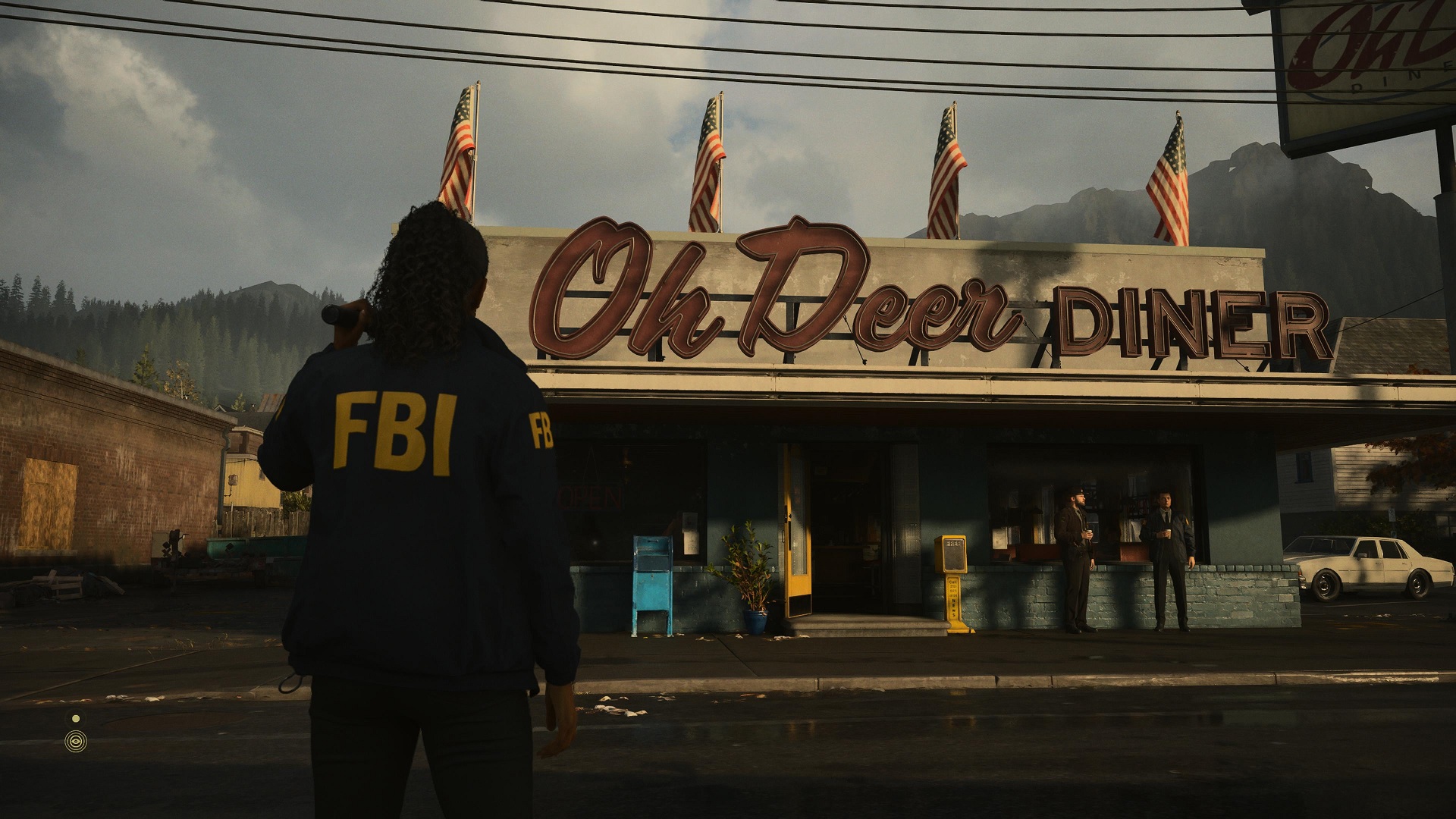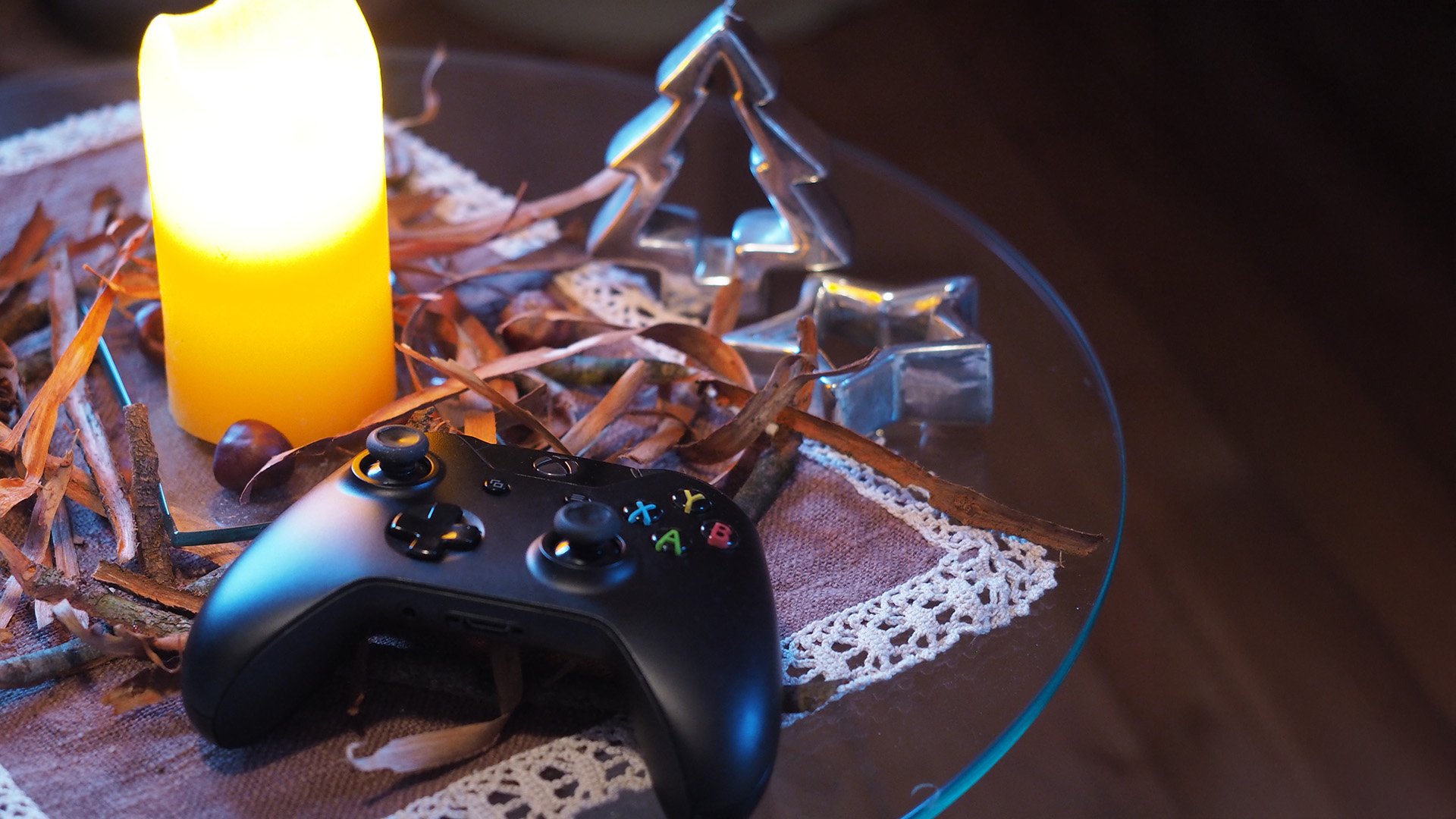Windows Central Verdict
Remedy Entertainment crafts a suspenseful journey full of twists, examining its title character in spades. It's a messy, imperfect narrative that doesn't even try to wrap up every plot thread, but delivers a raw, emotional ride. Solid third-person survival horror-gameplay helps carry that journey outside of a handful of technical issues.
Pros
- +
Wild narrative with great performances
- +
Solid third-person gameplay
- +
Some compelling puzzles
- +
Killer soundtrack
Cons
- -
Bevy of technical issues
- -
Uneven plot payoff
Why you can trust Windows Central
"It's not a lake, it's an ocean."
Those final words have haunted players for years, prompting theories as to just what titular writer Alan Wake realized. Now, over thirteen years since the original game — and a couple of years since Alan Wake was remastered — we've got some answers. But answers are like deep-sea diving; the more you learn, the more questions there are to ask.
Alan Wake 2 is a messy game. The plot takes big leaps and doesn't always land on its feet. In doing so however, it weaves a fantastic tale of clawing your way through the hopeless dark. Some technical issues aside, it's a masterwork of emotion, and a game that shows developer Remedy Entertainment still has plenty of surprises up its sleeves.
Disclaimer: This review was made possible by review codes provided by Remedy Entertainment and Epic Games. The companies did not see the contents of this review before publishing.
Second disclaimer: Unusually, this game was mostly reviewed on PlayStation 5. This is because PlayStation codes were the first available, and Xbox codes only became available shortly before the Alan Wake 2 review embargo lifted. My colleagues Jez Corden and Zachary Boddy tested the Xbox and PC versions of Alan Wake 2, respectively.
What is Alan Wake 2?

Price: $59.99 at Microsoft (Xbox) | $49.99 at Epic Games (PC)
Developer: Remedy Entertainment
Publisher: Epic Games
Genre: Third-person shooter / survival-horror
Install size: 80.99 GB
Playtime: 16+ hours
Platforms: Xbox Series X|S, PS5, Windows PC
Reviewed on: PS5 (primarily), Xbox Series X, Windows PC
Release date: Oct. 27, 2023
Xbox Game Pass: No
Alan Wake 2 is a third-person survival-horror game and the long-awaited sequel to the 2010 game, Alan Wake. It's also set in the same universe as developer Remedy Entertainment's 2019 game, Control.
In Alan Wake 2, players control two characters: Alan Wake and Saga Anderson. Alan and Saga each have some unique gameplay mechanics, but both must fight using guns, flares, flashbangs, and flashlights against the Taken, creatures of darkness that are formed by corrupting a human or animal. Alan is trapped in the mysterious and dangerous dimension known as The Dark Place, while Saga is exploring Bright Falls, the setting of the first game.
In addition to combat, players will have to solve puzzles, with some required for progressing the main story and others that aren't necessary but unlock rewards like more gear. An average playthrough will take 16 hours or so, though that time could easily go up if you get stuck on a particular puzzle or choose to explore extremely thoroughly.
Alan Wake 2
There's an ocean of darkness waiting in Remedy Entertainment's latest game. Not every story beat is evenly delivered, but two compelling protagonists and satisfying third-person gameplay mean this isn't a narrative to miss.
Buy at: Microsoft (Xbox) | GreenManGaming (PC)
Alan Wake 2 review: Story and characters
The story is at the center of Alan Wake 2, with Remedy bringing a cavalcade of ideas to the forefront of its dark universe. Alan Wake is desperately trying to escape The Dark Place, attempting to write a story that can get him out of this nightmare world where he's hunted by shadows and constantly interviewed by the mysterious Mr. Door. Meanwhile, newcomer Saga Anderson is an FBI agent investigating a series of murders in the small coastal town of Bright Falls that show signs of cult activity.
All the latest news, reviews, and guides for Windows and Xbox diehards.
While neither protagonist knows it, both are being drawn together, their lives irrevocably tangled in a complicated plot. Without going into spoilers — something that's harder than usual here — themes of families and loops show up constantly, as both characters are going in literal circles to try to save the people they care about while still getting out alive. Juggling two protagonists was a bold choice, but it pays off with how both Saga and Alan get to shine, and the entire cast here turns in excellent performances.
The structure here is best described as chaotic, which is as enrapturing as it is uneven. If Control was Remedy skillfully painting a picture with restraint, holding back for the cleanest brushstrokes for fear of making a mistake, then Alan Wake 2 is an artist's rage unleashed, throwing buckets of paint onto a wild, unrestrained mural.
Alan Wake 2 is an artist's rage unleashed.
There are big story swings where careful attention and theorizing pays off, but for every question answered, another three will trail off without ever being seen. Remedy has always been self-aware, giving nods to the complexity and unanswered questions its stories raise within the games themselves, but things have been taken up to an eleven here.
Alan Wake 2 is metatextual to a level that makes Remedy's prior works look simple by comparison. Even if not everything works or feels completely earned, this is a story that's unafraid to lash out wildly, weaving a tale of desperate people clawing their way through the hopeless dark.
Alan Wake 2 review: Gameplay and customization
Both Saga and Alan get access to a variety of firearms and light-based explosives in order to fight the Taken. You'll rarely face more than a couple of enemies at a time, but these foes hit hard and will require a fair amount of ammo to put down even when playing on normal.
Light isn't just a weapon, but a refuge, with the Taken unable to see you when you're staying in brightly-lit safe points. These safe points give you a chance to manage your inventory and, after playing the first few chapters of the game, swap between protagonists. Outside of the opening levels and the lengthy endgame, you can play Alan and Saga's stories in any order you want. I chose to alternate after every chapter, but if you want to finish one and then the other, that's totally viable.
Some gear is unmissable, but there's also a lot you can find if you're willing to explore and solve some puzzles. These puzzles are sometimes surprisingly complex, and I found myself having to scan the environment carefully for clues to get an idea of how to proceed or unlock an extra gun. Alan Wake 2 is more convoluted than many other narrative-focused games of the last few years, which isn't at all a bad thing — but it's going to make you think.
That's shown more directly in the unique gameplay mechanics that Saga and Alan employ. As an FBI detective, Saga has access to the Mind Place, a mental room where she can relax and sort through any clues she's found so far. While initially this process can seem a little basic, over time you'll collect hundreds of pieces of evidence that are filed into different cases, making it easier to understand what's going on or figure out your next goal.
Alan's abilities are different. As a writer trapped in a nightmare dimension that feeds on art and twists it into existence, Alan has the ability to rewrite the story he's in as long as it matches the horror/thriller genre, collecting story ideas and using them to alter everything around him. Setting a story of two sordid police officers in a theater might open up one path while closing off others, and telling a tale of grisly cult activity in abandoned tunnels can clear away rubble.
During my playthrough, I unfortunately encountered a number of "soft-lock" bugs that required me to reload an older save. This usually only took me back a few minutes, but it was irritating every time. Remedy released a patch the day I'm writing this (Oct. 25) that fixed some of these progression-barring bugs, so players who jump in at launch should have a smoother experience than I did; players should save often, though, just in case.
Alan Wake 2 review: Visuals and audio
Alan Wake 2 is aesthetically gorgeous, with Remedy's proprietary Northlight engine technology powering imposing visuals. All the characters look great with realistic performance capture, to the point that the live-action snippets that Remedy is so fond of never felt jarring.
The lush green forests of Bright Falls are hauntingly realized, its natural, peaceful beauty simmering with ugliness underneath. The shadowy realm of The Dark Place is given similar attention, as shades lurch and neon signs burn in a twisted version of New York City. This is truly a horror game, and it earns its M-rating with abandon. Gore is front and present with the Taken that Saga fights, with the possessed lurching on even as chunks of flesh are ripped out from gunfire and bones are exposed.
Remedy has always pioneered warping, dream-like visual effects, and those are cranked into overdrive here, as worlds blend together and realities bleed into each other in some fairly trippy displays.
Alan Wake 2 also features crisp audio work, from the broken-record chattering of Taken to howling wind through the trees. Remedy doesn't usually disappoint on the soundtrack front and that's the case here, with a massive collection of music. The track list is especially bolstered thanks to the Old Gods of Asgard, an in-universe band that first appeared in the first Alan Wake, performed by real-life band Poets of the Fall.
Alan Wake 2 review: Xbox Series X|S performance
Playing the game on Xbox Series X, the game runs at a flawless 30 frames-per-second even in intense moments in Quality mode, and a stable 60 FPS in Performance mode. There are many techniques and aspects of Alan Wake 2's technical design that feel utterly fresh in this kind of game.
The rain and weather effects, some of the best the industry had seen in the first game, once again push the envelope in Alan Wake 2. The seamless switching from the regular environment to Saga's investigative mind map environment is exactly why this game has an SSD requirement, most likely, and why there won't be past-gen versions for consoles.
I had some very infrequent instances where a few lines of dialogue didn't fire, despite subtitles still rolling. I was unable to reproduce some of these issues after rebooting, which means it's likely random. If, though rare, it occurred during a particularly pivotal scene, it could be a tad annoying.
On Xbox Series S, Alan Wake 2 has no access to the visually-intensive quality mode. The Xbox Series S version does maintain an incredible amount of visual prowess, with dense and animated foliage, impressive lighting, and intense weather effects. The compromises in visual sharpness are apparent, to account for the Xbox Series S' hardware, but the frame rate is also noticeably less consistent. — Jez Corden, Managing Editor
Alan Wake 2 review: Windows PC performance
When Alan Wake 2 revealed its PC spec requirements, we here at Windows Central heard the collective groan of the internet. This game is a technical and visual showcase, but it's also one of the most taxing PC games we've seen this generation. This is the title to bring any gaming PC to its knees, which means I was chosen to test it. After all, I've been using the Lenovo Legion Tower 7i (Gen 8), a high-end tower PC powered by an Intel Core i9-13900K, an NVIDIA GeForce RTX 4080, 32GB of RAM, and a high-speed SSD.
Even with so much power at my disposal (some of the most powerful components you can find in any gaming PC), getting to a stable 60 FPS in Alan Wake 2 wasn't that simple. Let's do some tests:
- With every setting turned up to the max and full ray tracing enabled, at native 1440p, and no NVIDIA DLSS or AMD FSR of any kind (including Ray Construction), I saw a pretty stable 30 FPS.
- With the same settings, but using AMD FidelityFX Super Resolution upscaling (set to the "Balanced" preset) rather than native 1440p, I was able to get between 50-60 FPS on average.
- Still keeping the same settings but enabling NVIDIA Deep Learning Super Sampling upscaling (set to the "Quality" preset) rather than native 1440p, and enabling DLSS Ray Construction, I was able to get the same 50-60 FPS as the above, but with a higher native resolution.
- Lowering the DLSS resolution upscaling to the "Balanced" preset is where I finally got a stable, consistent 60 FPS with all visual settings maxed.
- Enabling NVIDIA DLSS Frame Generation on the above settings got me around 100 FPS, but this felt noticeably less smooth than the 60 FPS I already had before enabling it.
- Finally, I played the game at my native 1440p resolution with no resolution upscaling and the nicest "High" preset (both for graphics and ray tracing), which lowers volumetric lighting quality and shadow details slightly versus max settings. Without ray tracing I was able to get 110-120 FPS on average. With ray tracing (and DLSS Ray Construction), I saw pretty stable performance of 65-70 FPS.
That's a lot of numbers to basically say — Alan Wake 2 is a monster of a video game. This will likely be a new benchmark for gaming PCs for years to come, especially when testing ray tracing effects. Those with NVIDIA RTX GPUs will have an easier time getting stable framerates with ray tracing enabled than those with AMD GPUs, thanks to DLSS Ray Construction giving an extra 5-6 stable frames-per-second on average.
Overall, though, the game felt smooth regardless of my settings (with the exception of using DLSS Frame Generation). There were no dropped frames or noticeable stutters; it's just a matter of finding the balance for your hardware. My advice? Stick with the presets, and then change the resolution upscaling until you reach the framerate you want. Each step down noticeably improved my performance with hardly any noticeable degradation to visuals.
One thing is for sure, though. This game is gorgeous. — Zachary Boddy, Staff Writer
Alan Wake 2 review: Accessibility and approachability
Unfortunately, Alan Wake 2 is fairly threadbare on accessibility features. There are some features, such as the ability to add speaker names to subtitles or difficulty settings, but there's no extensive list of options. While I'm not personally sensitive, it's worth mentioning there are number of jump scares with sudden black-and-white imagery that may give people problems if they are susceptible to strobe effects or bright lights.
If you're new to horror games, I highly recommend playing on the Story difficulty, as the Normal setting is still quite challenging and can be fairly demanding in boss fights. As for more general approachability, while players can gather some details from context, you'll want to have already played Alan Wake in order to understand the setting. Going through the connected Control isn't a bad idea either.
Alan Wake 2 review: Should you buy it?
This game is as messy as it is beautiful. Technical issues mar otherwise-stellar presentation, and while a lot of these issues have been fixed, players should proceed with caution all the same. Outside of bugs and glitches, not every beat in the story lands or goes unanswered in a satisfactory way.
Related: Should you play Alan Wake 1 before playing Alan Wake 2?
Even so, Alan Wake 2 is raw, making it a brutal experience that shouldn't be missed by longtime Remedy fans or newcomers drawn by promises of terror. It's a story that examines what it means to be a writer and balance expectations from an audience, matched with satisfying combat that bloodily earns its place as a horror game.
Alan Wake 2 isn't flawless. In fact, it might be Remedy Entertainment's most imperfect game. Despite that, it's also my favorite title from the studio's storied history, lending weight to Alan Wake's 2 ability to enrapture you every darkness-laced step of the way.
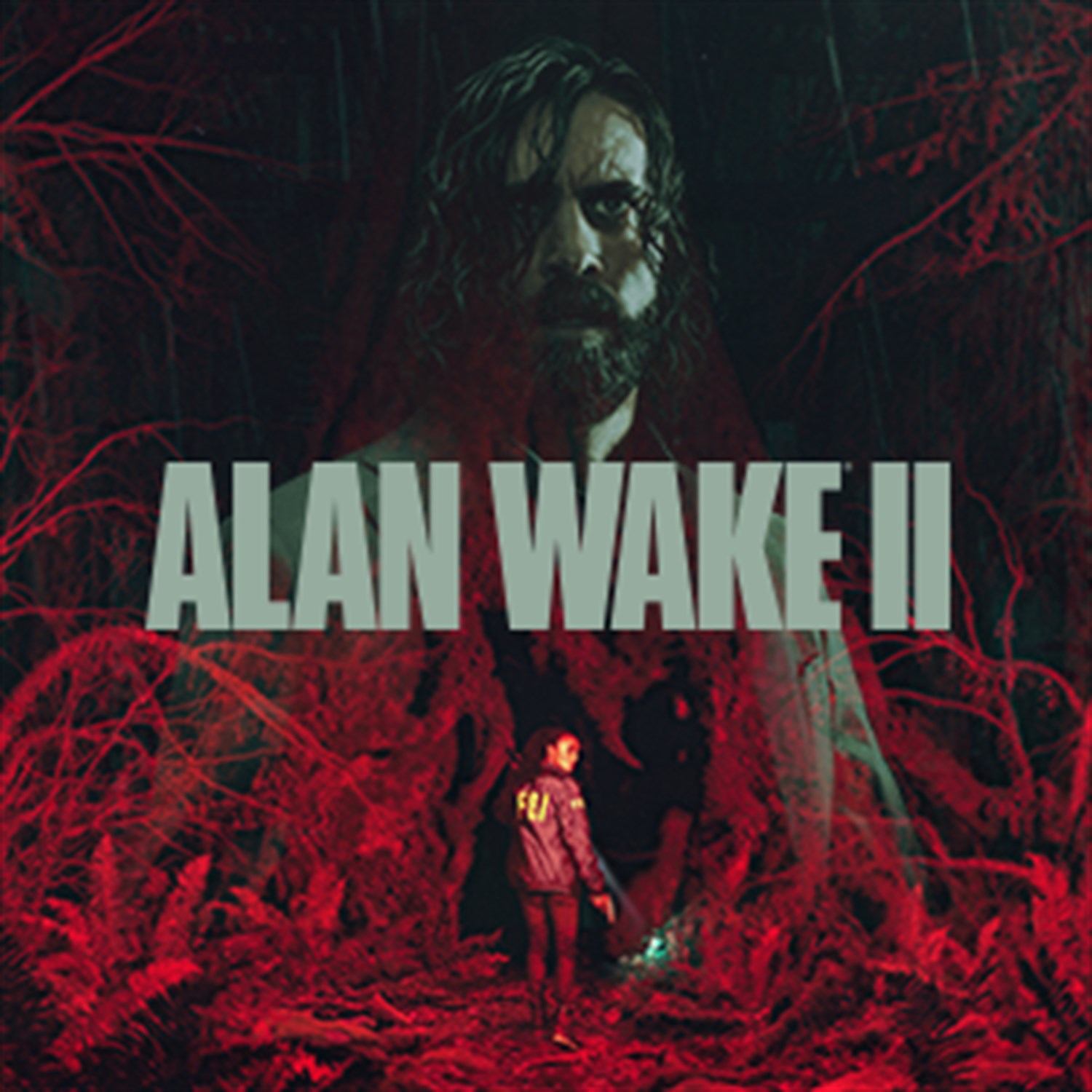
Alan Wake 2 isn't quite perfect, but the raw story presented here is instantly compelling. Saga Anderson and Alan Wake take this messy journey through grisly turns and twists, revealing an ocean of darkness with no end. Improved survival-horror gameplay and brain-teasing puzzles round out an experience showcased in gorgeous detail.

Samuel Tolbert is a freelance writer covering gaming news, previews, reviews, interviews and different aspects of the gaming industry, specifically focusing on Xbox and PC gaming on Windows Central. You can find him on Bluesky @samueltolbert.bsky.social.
- Jez CordenExecutive Editor
- Zachary BoddyStaff Writer
